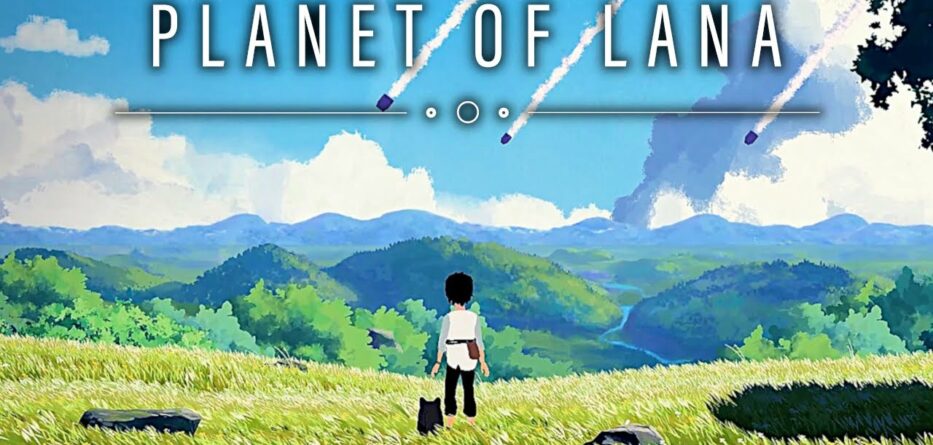Set on an alien planet similar to Earth, Planet of Lana is a relaxing combat-lite stealthy puzzle platformer about a young girl from a fishing village rescuing her sister from extraterrestrial robot invaders.
Story
Lana and her sister are visiting their parents’ graves when, out of nowhere, spaceships come hurtling down from the sky. Moments after crashlanding, giant clawed machines ascend from the wreckage and start scooping up the villagers and wildlife. Lana hides in the tall grass but unfortunately, her sister is captured. After narrowingly escaping the abduction, Lana rescues an adorable black cat caught inside one of the invader’s traps. Now, with Mui the feline sidekick in tow, Lana vows to rescue her sister from the clutches of the sinister invaders.
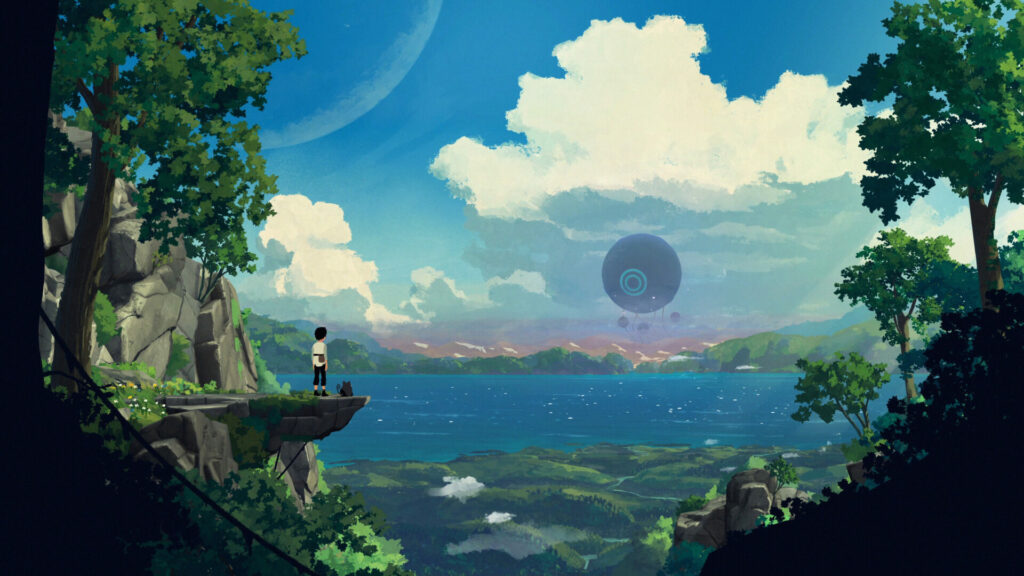
Gameplay
Early on, Planet of Lana introduces its two core mechanics: stealth and controlling Mui. As Lana is weaponless and incapable of fighting, she instead opts to sneak past enemies or to use the environment to distract them or in some cases, kill them. Where there is long grass there is always the demand to be stealthy, so seeing long grass is a helpful indication of what to expect. As this is a puzzle game, it would be far less interesting if everything was in arms reach, so in order to reach the unreachable Lana can control her cat sidekick Mui to perform certain tasks. Tasks include hitting switches, standing on switches and cutting down ropes, to name a few. Eventually, being stealthy and controlling Mui are combined to create a variety of puzzling situations.
Throughout Lana’s journey, she will uncover a couple of gadgets that will extend her abilities to control Mui and her tenacity to fight off the robotic invaders. The first gadget gives Mui a kind of telepathic (and psychopathic) ability to manipulate other organic matter. The other gadget allows Lana to hack into the machines, opening up a new can of worms towards the end of the game.
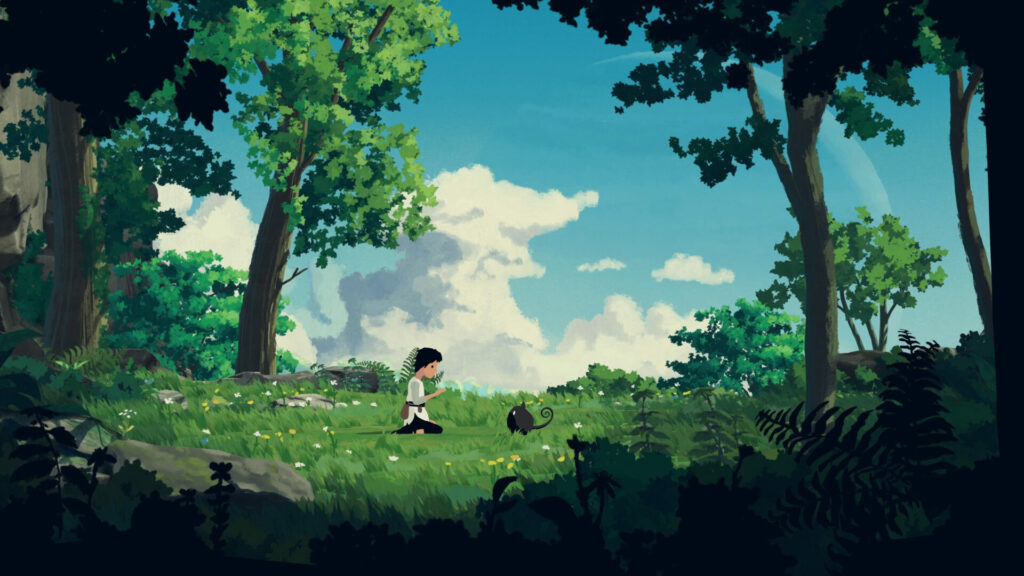
Besides the usual hopping, crawling and climbing there’s not much more to expect. Lana can’t backtrack or explore the world freely; Planet of Lana is on a one-way track, pushing you from chapter to chapter without any friction – besides the puzzles, of course. There are optional shrines to discover that allude to the origin of the robot invaders but by the end of the story you will be able to piece it together all on your own.
Level Design
It can be boring when puzzle games are nothing more than a series of bland escape rooms with a tenuous connection but thankfully Planet of Lana is the opposite. Lana is on a one-way track, so although there’s not much exploration to do, Lana is continuously pushing onward through a naturally-evolving ecosystem. As you can imagine, travelling across the breadth of a planet means ample sightseeing opportunities, and although the set dressing isn’t as varied as one might hope for an alien planet, what Lana does get to see is truly beautiful.
Planet of Lana uses the camera in interesting ways to create dynamic moments, almost as if it doesn’t want to ignore the hard work that has gone into designing the environments. If Lana is in a massive space, the camera will pull back to show off its opulence. If there’s a small detail in the background as Lana passes it, the camera will push in for a subtle cinematic moment. The camera is locked off for the player but manoeuvring it isn’t necessary as every puzzle is framed perfectly, and it’s a relief that this has been considered so as to not overcomplicate what is essentially a relaxing rescue mission.
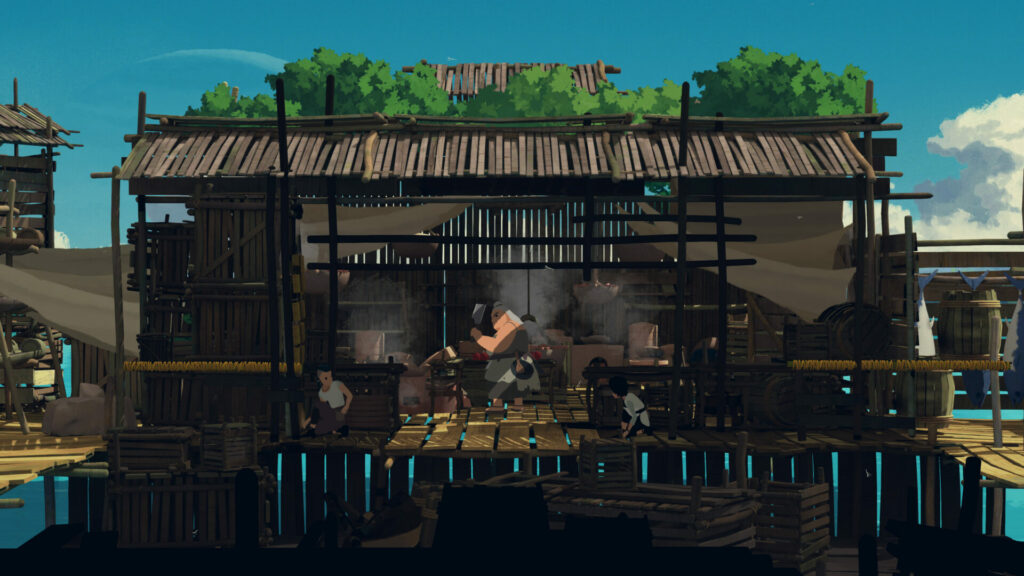
Somewhat distracting though are the more traditional gaming elements, such as how objects with yellow on them hint that they can be interacted with. It would be unjust to say that they ruin the experience because they don’t but their inclusion certainly creates a mild disconnect from the natural beauty in the world that Planet of Lana takes place on. The abundance of tall grass always involves a stealth puzzle but the grassy elements blend into the world more convincingly than the yellow items do, and it would have been better if this approach had been applied to interactive objects as well – perhaps make them mossy and muddy surfaces instead.
Art Design
Side-scrolling puzzle platformers often have a unique visual punch and Planet of Lana lands that punch the hardest. Almost as if it has been plucked from a Studio Ghibli movie, Planet of Lana draws you in with its beautiful anime-inspired rendition of a normal girl living a normal life on a relatable (but alien) world.
In the background is a distant planet that is just barely visible in the sky, and it creates a faded halo that intentionally frames the actions of our heroine, putting Lana centre stage at all times. Besides forests and caves, there aren’t many diverse locales to explore but Lana and Mui are afforded some truly beautiful vistas on their adventure. The game isn’t shy about giving players a cinematic moment to enjoy, so take it all in while you have the chance.
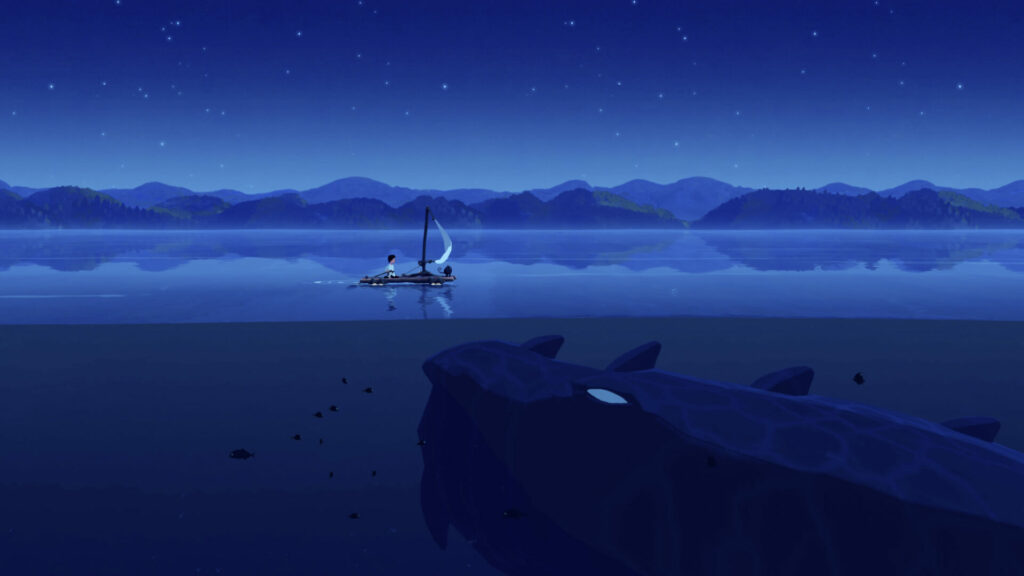
Planet of Lana is also animated extremely well, almost to the point that Lana looks rotoscoped.
Lana is a regular person and not an action hero, and this is effectively expressed in her motion. Whether it’s scaling a wall, swinging on a rope or falling into a roll, the inexperience and naïveté of her situation are clear to see in all of her reactions.
The animals behave realistically too. Mui, for example, often feels more three-dimensional than other characters because it has a range of motion that feels like a real cat. The spider-like robots mimic the eerie movements we’re all too familiar with spiders having, and the slimy, spindly creatures in the dark are even worse. These are the kind of details that helps elevate the experience and makes everything feel more authentic.
Sound Design
You would be forgiven if you thought John Williams composed Planet of Lana’s soundtrack because it would be right at home in the Star Wars universe. It’s fitting that a game about a young fisherwoman who lives in a galaxy far, far away would have a soundtrack reminiscent of Star Wars and its impact cannot be ignored. It feels familiar, nostalgic and relevant.
Characters speak an alien language, which is an excellent design choice as it certainly cements the idea that we’re not on Earth. If you have ever owned a Furby, the language in Planet of Lana is a little like that; characters speak very little, opting to use key phrases that you will hear often enough to potentially decipher. Usually, the reduced word count is enough to push the story forward or to act as prompts for puzzles. As you won’t have a comprehensive understanding of the language, it’s up to you to convey meaning through tone and circumstance, which Planet of Lana pulls off pretty successfully.
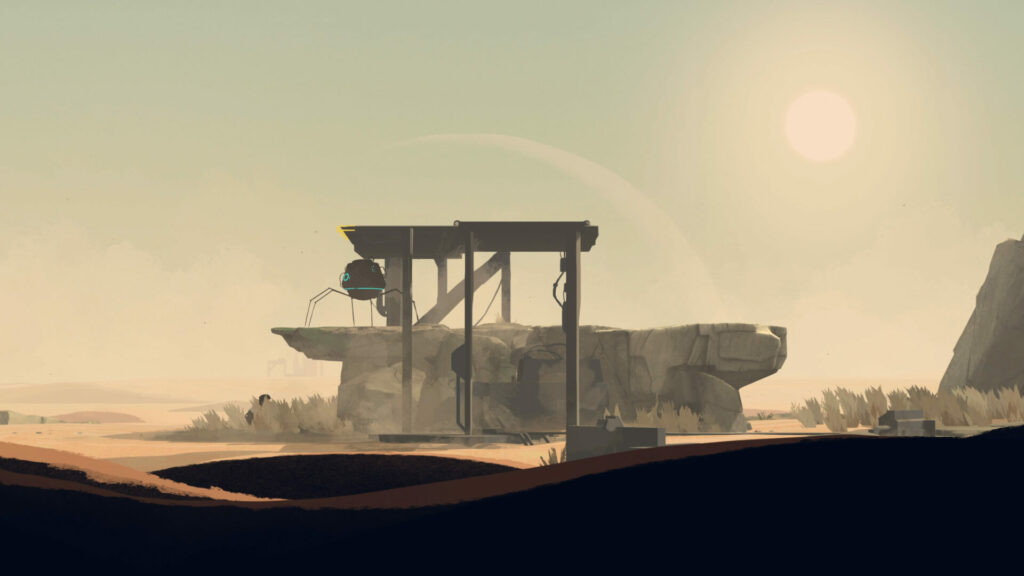
There is also a musical element that becomes important throughout Lana’s journey. The robots that have invaded her planet communicate through song, and eventually, Lana is able to learn it. Without going into too much detail, it’s a clever use of sound effects and hearing the robots do their symphonic chirp during an encounter is more enjoyable than it ought to be.
The Cons
For an other-worldly planet, Planet of Lana doesn’t have enough diversity. It’s not a problem that the humanoids are for all intense and purposes human but it is disappointing that you don’t get to explore more varied locations. This would help with another problem, which is the limited diversity of creatures. Having more places to visit would have opened up the opportunity to wrestle your way past different zoological barriers, and when a game is this beautiful to look at, more enemies and more unique encounters are what are thirsted for.
Planet of Lana is also very easy, so the puzzles won’t be enough to engage everyone. This isn’t necessarily a problem if you are looking for a chill game after a long RPG campaign as you will be able to take Planet of Lana in its stride and enjoy what it has to offer. However, if you’re looking for difficult environmental puzzles, spacial riddles or convoluted brainteasers, you won’t find any. The hardest thing in Planet of Lana is finding all 10 hidden shrines and if you never find a single one then you wouldn’t even realise there are 10 to find in the first place.
Conclusion
Should you play it? Yes
Why… Planet of Lana is beautiful, relaxing, fun to play and captivating to look at. Rescuing a loved one is a premise everyone can get behind, and the addition of a cute cat companion will even be enough to convince dog-lovers to give it a try. As far as puzzle platformers go, it doesn’t break the mould but it does offer a familiar experience fans of the genre shouldn’t ignore.
But… Planet of Lana is roughly 4 – 5 hours long, and as it doesn’t strive to be particularly challenging, you might be left wanting for more than a laid-back adventure through a botanical manga brought to life.
Final Score: 7/10
Reviewed on Xbox Series S
Developer: Wishfully
Publisher: Thunderful
Playable on: Xbox Series X/S, Xbox One, Steam, PC
Released: 23rd May, 2023




